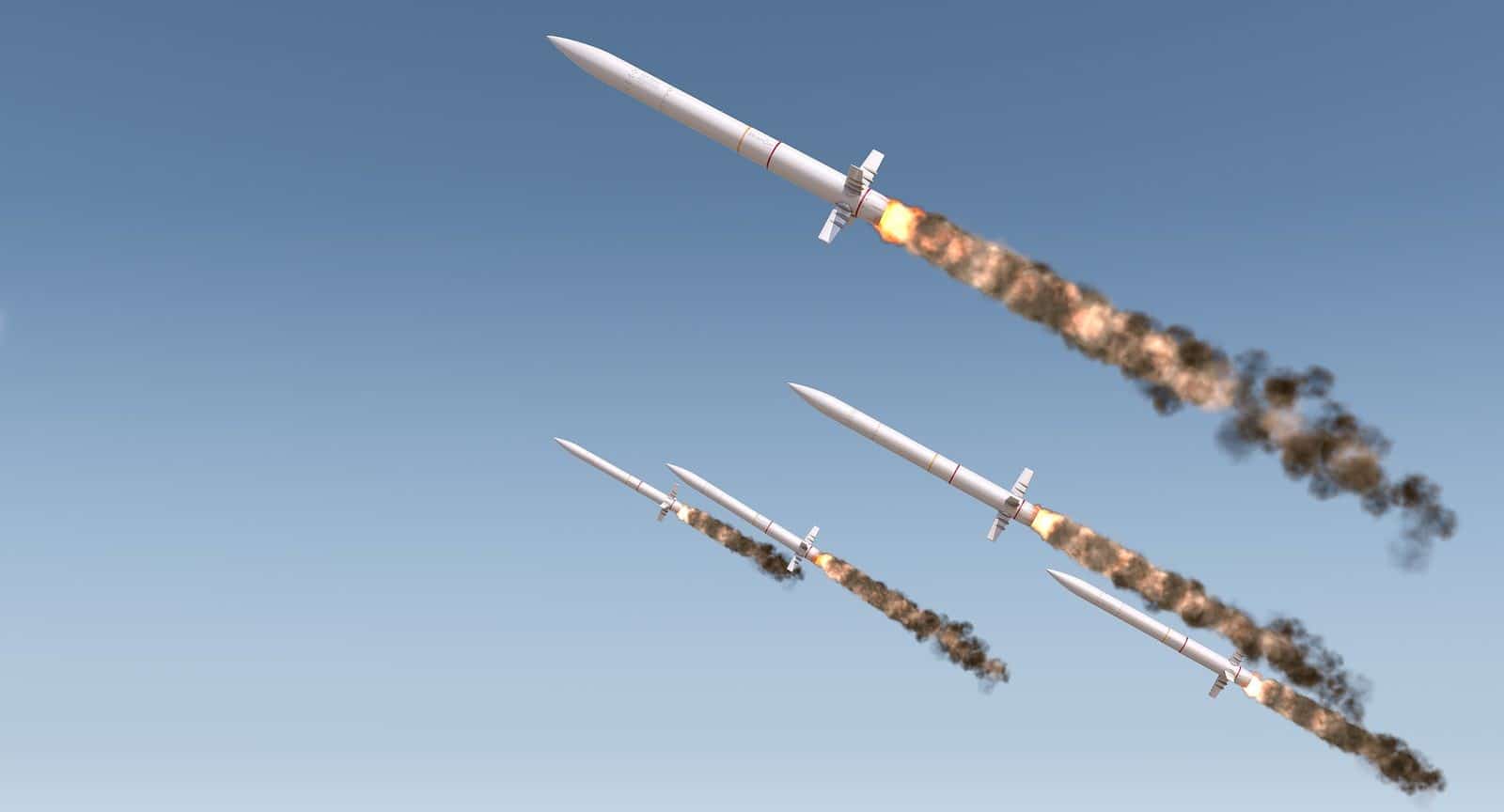A recently disclosed ruling by Iran’s supreme leader caps the range of Iran’s missiles at 2,000 kilometers, a distance that threatens Israel, Saudi Arabia and Egypt but doesn’t threaten Western Europe. Practically speaking, this ruling is neither new nor truthful. Europe has a good reason to be concerned.
It is not unusal to read stories about con artists who successfully cheat unsuspecting victims by selling them non-existent merchandise or goods that have already been “sold” to previous victims. Such sting operations exploit the human tendency to believe in what makes us feel good — even in the face of known facts and common sense.
A similar tendency exists to believe in “feel good” notions have been recently seen the eagerness of some Western observers to ignore the uncomfortable reality and accept statements of reassurance made by adversaries. This comes in the wake of a statement by the commander of the Islamic Revolutionary Guard Corps on October 30, 2017 announcing that the Supreme Leader of the Islamic Republic, Ayatollah Khamenei, had ordered Iran’s military to limit the range of its missiles to 2,000 kilometers. The Revolutionary Guards commander made it clear that this range is enough for Iran, “for now.”
One could almost hear the sigh of relief that came from Europe and the United States which had been holding their breath since the Revolutionary Guards’ annual parade of September 22, 2017, when an Iranian ballistic missile of a type never seen before (dubbed “Khorramshahr by the Iranians) was displayed. Watchers of Iran’s and North Korea’s missile programs immediately linked this missile to a report in the German media, published back in 2006, that Iran had purchased 18 or 19 BM25 missiles from North Korea – missiles that had a range of 3,500 kilometers. The existence of such a missile was first revealed two years earlier by reports in the Japanese press of a North Korean long-range missile project named “Musudan” which was based on a design of a Soviet submarine-launched ballistic missile.
The mysterious “Musudan” (elsewhere called “BM25”) was finally unveiled by North Korea in a 2010 military parade. Some dovishly-bent Western observers quickly reassured the public, pronouncing the paraded “Musudan” as nothing but “theaterical props” and “propaganda accessories.”
In talks that took place that year between the United States and Russia regarding the North Korean and Iranian missile programs, the latter decisively opined that the “Musudan” / BM25 missile did not exist. Nevertheless, and despite recurring failures, in the summer of 2016, the North Koreans trumpeted a successful flight test of the “Non Existent / Stage Props” “Musudan” missile and posted an impressive video to back that claim. The North Koreans even published the missile’s maximum altitude and its flight distance. From this data, it is possible to calculate that the maximum range of this missile is about 3,500 kilometers.
As for the Iranian “Khoramshar,” any doubts about its provenance faded when the Iranians released a video showing its flight test, probably held in January of this year. In the video, we see the “Khorramshahr” missile leaving a trail of flames behind it, similar to its North Korean twin. It is no wonder then that the appearance of the “Khorramshahr” in Iran has caused uneasiness in Europe. Its range is sufficient to hit most countries in Central and Western Europe, and to threaten Berlin and Paris from launching points in western Iran. In view of the Iranian need to maintain good economic and political relations with the European countries, especially given their continued support for the nuclear agreement that revived the Islamic Republic’s economy, representatives of the regime have launched a public relations campaign to placate their European partners.
The unveiling of the missile in September was immediately followed by a declaration that it had a range of only 2,000 kilometers and that Iran had “reduced its dimensions” so that it could not exceed this limit. As lingering European concern continued to resonate in social networks and in publications coming out of research institutes, the commander of the Revolutionary Guards, General Mohammad Ali Jafari, issued a solemn declaration that the “Supreme Leader” himself, the Ayatollah Ali Khamenei, had ordered the Iranian missile range to be limited to 2,000 kilometers — a range that reaches some of the European Union member states on the eastern part of the continent but does not reach Germany.
In Iran, the “Supreme Leader’s” decrees have the force of both national law and a religious ruling. That is why some Western analysts attribute significant weight to them. That the Supreme Leader is free to retract his rulings at any time since there is no earthly authority above him does not discourage those who want to believe in Iran’s good will. Even the qualification by the commander of the Revolutionary Guards that this decree only applies “for now” didn’t faze them.
In reality, the maximum range of the “Khorramshahr” was, and still is, 3,500 kilometers. In order to “shorten” the range, the Iranians increased the weight of the warhead from 500 kg. to 1,800 kg. This is comparable to tying a weight onto the feet of an Olympic runner. And just as easy to untie the weight from the runner’s legs, reducing the warhead weight back to its original weight does not pose any significant problem.
Khamenei’s decree to cap the range of the “Khorramshahr” has the exactly the same value as his religious decree (fatwa) against the development of nuclear weapons in Iran which he issued when the UN-decreed sanctions were starting to bite . Both decrees were crafted with the intention of impressing diplomats and gullible commentators in Europe and the United States with Iran’s good will, without tying Iran’s hands in its nuclear and ballistic missile programs one iota.
What’s more, this fictitious limiting of missile range has already been sold to the West several times in the past. The 1998 unveiling of Iran’s first long-range missile, the “Shahab 3,” stirred debates in the West about its maximum range. To placate Western concerns, the Iranians announced on various occasions that they were not interested in missiles with ranges exceeding 1,500 kilometers — a range that covers Israel, the Gulf states and Saudi Arabia but does not threaten any country in Europe. In 2004, following the first flight test of a more advanced model of the “Shahab 3,” the then Iranian president, Khatami, announced that Iran now had a missile with a range of 2,000 kilometers. From Iranian articles and interviews, it could be seen that this announcement, which contradicted the previous self-imposed range limit of 1,500 kilometers, surprised even senior Iranian officials. However, once the new range was announced, it became a new magic number. Ever since that time 13 years ago, Iran’s unchanging mantra is that it self-limits the range of its missiles to 2,000 kilometers.
In order to clarify that this self-imposed limitation is political and not technical, Ali Shamkhani, Iran’s Defense Minister at the time, said that, “Israel has implied that Iran’s missile capability is a threat to Europe… I explicitly declare that we are not threatening any European country and that the Islamic Republic of Iran poses no threat to Europe.”
Over the next few years, Iran unveiled additional missiles with ranges beyond this limit: The “Ashoura / Sejjil / Sejjil-2,” a two-stage ballistic missile (the Iranians regularly rename their missiles for reasons unkown) whose range has been estimated by Western analysts to be between 2200 and 2450 Kilometer and the “Meshkat / Soumar,” a strategic cruise missile based on the Soviet KH55 cruise missile with an estimated range of 2500 Kilometer. The Iranians have declared categorically that the range of these two new missiles are exactly 2,000 kilometers. The “Khorramshahr” now joins them as a third Iranian missile with a declared range of exactly 2,000 kilometers. It is highly improbable that three types of missiles with striking technological variability — a solid propellant ballistic missile, a liquid propellant ballistic missile and a cruise missile — all have exactly the same maximum range down to the last kilometer. Hence, the Iranian range declarations are nothing but propaganda and has nothing to do with the real range capabilities of the missiles.
An interesting example of how the Iranians exploit range declaration for propaganda was seen at a weapons exhibition held in Tehran in 2014. The “Qader” (the extended -range version of the “Shahab 3” missile), was displayed in this exhibition with a placard in Farsi detailing its performance, specifying a range of “1,947 kilometers.” Most Iranians and all Israelis will easily recognize this number not as distance but rather as a date; namely the year the UN decided on the establishement of a Jewish State. International observers, on the other hand, see the number on the placard as random but good, since it does not exceed the promised limitation of 2,000 kilometers.
Every summer Iran holds large-scale military exercises where it displays its latest military hardware. In an exercise held in the summer of 2011, dubbed “Great Prophet 6,” during which they fired a signifcant number of ballistic missiles, the Iranians unveiled a silo based “Shahab 3” missile. That silo resembled the strategically reinforced silos used by the Russians and the United States to protect their nuclear ballistic missiles against each other’s nuclear first strike.
Apparently this grated on some nerves in the West and brought some adverse diplomatic reactions, becauses the Iranian government hastily issued a public statement — in the middle of the exercise – to clarify its position. In that statement, released on August 6, 2011, Iran reiterated its committement to the 2,000 kilometer range limitation. Thus, the September 2017 announcment regarding the Supreme Leader’s decree is not the first but the second time this fiction has been “sold” to the West by official govermnet statements. In fact, the self-same fictional range limitation has been sold again and again to the West by lesser Iranian officials and by Iranian media outlets over the past 13 years and has been repeated at each unveiling of a new long-range missile.
It seems that the Iranian promise to limit the range of its missiles has impressed some well-meaning missile proliferation analysts, not unlike the way the Iranian Supreme Leader’s “no nuclears” fatwa has impressed well-meaning nuclear proliferation analysts. “When it comes straight from the supreme leader himself, this declaration has more meaning” one of them recently stated.
Paradoxically, the faith in Iran’s willingness to limit the missle range to 2,000 kilometers is coupled with a skepticism regarding its technical ability to achieve such a range. A commentary posted by the prestigious Stockholm International Peace Research Institute (SIPRI) on October 30, 2017 it was determined that the “Qader” missile (the selfsame missile that bore the “1947 kilometer” placard) has a range of only 1,600 kilometers. The same post also claims that the more advanced “Sajjil” missile is expected to reach a range of 2,000 kilometers but it is still under development. The belief in the sincerity of Iran’s intentions dovetails with the skepticism about its technical capabilities. Both beliefs encourage wishful thinking about Iran’s professed harmlessness (at least as far as Europe is concerned). This is another demonstration of human gullibility and the tendency to believe in the “feel good” salesmanship of con artists.
The Iranians are famous as perhaps the best salesmen in the world. By “selling” the same merchandise — the range limitation – again and again to willing audiences in the West, they have succeeded in decoupling their missile programs from the nuclear agenda to gain the historic achievement of a nuclear agreement. This agreement made respectable one of the most radical regimes in the world, a regime that calls, at least twice a year, for the destruction of the United States and Israel. The nuclear deal has practtically granted Iran a carte blanche to do whatever it pleases in the Middle East. The results are already evident and the price will be paid by the people of the region and the entire Western World.
JISS Policy Papers are published through the generosity of the Greg Rosshandler Family.
Photo: Bigstock






 - בניית אתרים
- בניית אתרים